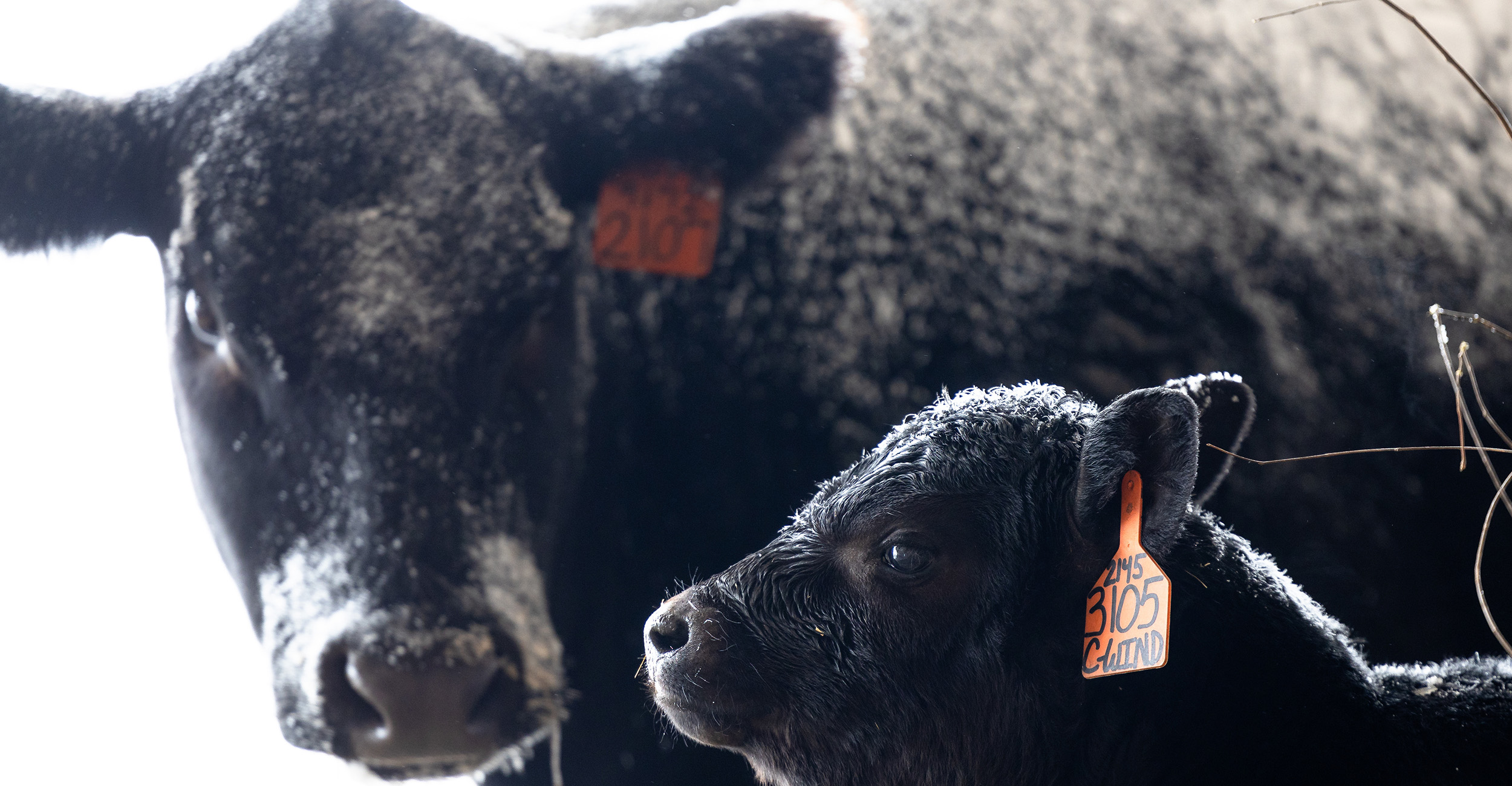
Preparation tips for winter calving
Tuesday, January 30, 2024
Media Contact: Gail Ellis | Editorial Communications Coordinator | 405-744-9152 | gail.ellis@okstate.edu
When to intervene
While Oklahoma weather can be unpredictable, calving methods should remain consistent when it comes to intervening during labor or delivery.
Expectant cattle need to be sectioned off in advance of calving, in the event they need to be taken to a veterinarian or moved elsewhere for closer observation. Having a trailer or working chute ready to go is also helpful.
Dr. Rosslyn Biggs, Oklahoma State University Extension beef cattle specialist and veterinarian, said if labor is not progressing, ranchers should wait about 30 minutes on mature cows and no longer than an hour for first-calf heifers before stepping in to assist.
What to do
Prepare a calving kit that includes:
- Veterinary emergency number
- Breeding dates and due dates
- Flashlights with batteries
- Thermometers
- Functional chute
- 5-gallon bucket
- Obstetrical chains and handles
- Syringes and needles
- Clean towels
- Straw and hay
- Esophageal feeder
- Colostrum or colostrum replacer
- Medications
- Halter
- Sorting stick
- Lariat
- Ear tags and tagger
- Large trash bags
- Disinfectants
Post-calving protocol
Once a calf is born, it should stand on its own and attempt to nurse within 60 minutes. Otherwise, a rancher may need to assist the calf with both standing and nursing. Depending on conditions and the mother’s temperament, this can be easier said than done.
Biggs recommended a calf receive colostrum four to six hours after birth. If a rancher is unsure whether the calf has nursed on its own, colostrum should be administered with a bottle or tube feeder.
Tagging calves is also best in the calf’s earliest days. Biggs warned that cows will sometimes unintentionally swap calves, and tagging is a good practice for recordkeeping purposes, as well as future genetic selections.
How extreme weather impacts calving
Biggs noted an extreme climate event can trigger stress in cows, which is why some may calve during winter storms. Ranchers on the calving clock can attempt to help their cows and heifers deliver during the day instead of those cold nights by applying a proven feeding technique. Feeding the herd at night is suspected to have a hormonal effect on expecting cows that causes them to give birth during daylight hours.
